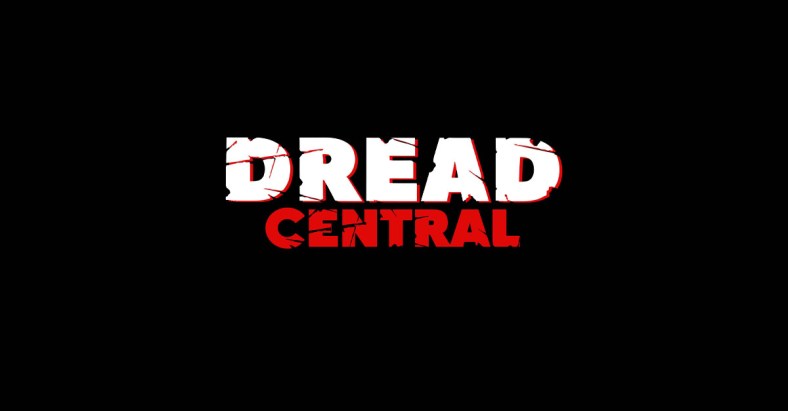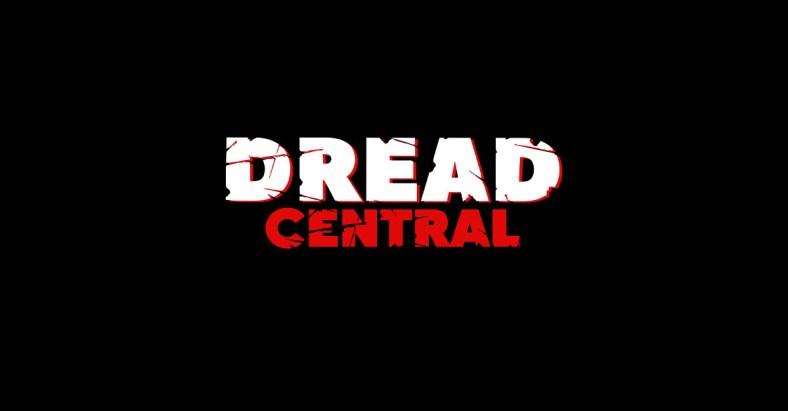Death Note: L’s the Name: Exclusive Interview with Lakeith Stanfield

After springing to life as a manga (created by Tsugumi Ohba and Takeshi Obata), anime and four Japanese live-action movies in its native Japan, Death Note has now been transformed into a US-production by Asian remake master Roy Lee (The Ring, The Grudge, Dark Water, etc.).
The new movie follows a Washington high school student named Light (Nat Wolff) who finds a supernatural notebook with a most unusual power; if the owner writes someone’s name into it while picturing their face, he or she will die. Egging the teen on is fearsome death god Ryuk (voiced by Willem Dafoe) and girlfriend Mia (Margaret Qualley of “The Leftovers”). With a body count passing the 400 mark(!), you could say Light gets a bit carried away, which attracts the attention of brilliant but eccentric crimestopper L (Get Out’s Lakeith Stanfield). Adam Wingard (Blair Witch, You’re Next) directed the Vancouver-lensed film, which boasts some nasty splatter FX by “Supernatural’s” Toby Lindala. Dread Central spoke with busy 26-year-old actor Stanfield, who loved playing the enigmatic and quirky L. Death Note drops this Friday on Netflix and opens in select LA and New York theaters.
Tony Timpone: What attracted you to the character of L?
Lakeith Stanfield: He is a very cute, cuddly character. I almost instantly fell in love with him. I thought the character would be interesting to explore and investigate within the confines of this story, which was new to my awareness. I never heard of Death Note prior, and I was really happy with the idea that I might get to play this character.

TT: Did you watch the previous movies and anime in crafting your interpretation of the character?
LS: I did. It was fun homework. It is such a great series. I read three volumes of the manga and watched both the Japanese version and the dubbed anime series to get a reference for L’s voice. And then I watched all three live action Japanese movies. And it was great. Gave me a wealth of knowledge.
TT: What did you strive to bring to the character that may not have been there before?
LS: L’s social awkwardness and his high intelligence level appealed to me. I wanted to maintain those critical faculties. Also the fact that he’s lazy looking, but not lazy at all. I wanted that to come across as well. Plus the fact he loves sweets so much. I kept asking them for more candy. It was a lot of candy!
TT: I love how you copied L’s unique body language and odd tics from previous incarnations…
LS: Yes, that was something I wanted to pay attention to. I also liked how particular he was with his movement, almost like a ninja. Every move of his was methodical. That was fun to play with.
TT: Anything else specifically that you brought to your interpretation of the character?
LS: I liked the way he grabbed things. I did a lot of that, but less wound up in the actual movie. I wanted to put that in there. And also I wanted to add a level of physicality that I didn’t see in the anime, like the way he might move when he was running or pursuing someone. So I made sure his running style was very deliberate and opposite of how you would think a person may move. In order to do what he does he has to be in great shape; I know he eats a lot of crazy candy and stays up for long hours, but he must work out and run in order to stay healthy.
TT: Why does Death Note have such a strong international following?
LS: The question of morality, and mortality, is as old as time itself. And how that applies to life and death and who has the right to determine life and death. And also the magical nature; at some point, everyone can imagine, “What if I had a book where I could just right down the names of people I hate and they would disappear?” People have been finding that attractive ever since the Death Note manga, the anime and now the live action version.
TT: What does Adam Wingard’s film get right that previous Asian remakes got wrong?
LS: What’s interesting to me about these adaptations is that they are interpretations. And by virtue of that, I don’t think they can get things right and wrong. It’s up to the audience to decide what they feel is right and wrong. The artists, the filmmakers, the cinematographers, the actors…we just come in and interpret what has already been there.
TT: Were you a fan of Wingard’s previous films?
LS: Yes, I do like his films a lot. I love how he executes, and I do use that word meaning both, his stories and the way he kills people. He makes his movies quite fun to watch.
TT: Do you think the story will appeal to a mainstream audience unfamiliar with the Death Note legacy?
LS: Yes. I hope the teenagers come out and watch it, provided their parents will allow them. It will be a really good time for them.
TT: Were you ever concerned that the new movie strayed too far from the source material?
LS: I was concerned about being true to the original content. I was a fan, so I wanted to makes sure we paid homage and nods to what came before and I wanted to do that with L as well. I did realize we were making a whole other story based on Death Note. It was not a direct translation of the original content. Just me being black made that obvious. I dove into this story without clinging too much to the past, but [other elements] I said, “We’re putting this in.” I kept that in a sacred place.
TT: Get Out was the horror sensation of the year. By comparison, Death Note is kind of flying under the radar with its Netflix release, especially theatrically. Are there any drawbacks to this distribution model?
LS: No, it’s great we’re in this time of technological revolution. The way cinema is consumed is different and changing rapidly. It’s great to be a part of this new movement. Now you get to have all your favorite stuff at your fingertips. If you want to, you can still go to the theater, but you have more options available to you. It’s an awesome thing. Death Note will be ingested in a different way than Get Out.
TT: Not everything is tied up at the end of Death Note. Was there talk of a sequel while you were shooting to resolve the story later?
LS: Not with me. I have no idea where it goes from here. I definitely want to see more.
TT: Were you surprised by the success of Get Out?
LS: Yes, very. It took us all by storm. We were working with a very humble budget. We didn’t expect the film to take off the way it did. And I’m glad it did, because it dealt with issues that black people and I think about a lot. The issue of being in a situation where your consciousness is always directly under attack and how to navigate this world where you are considered a minority and tucked away in the under chambers of society. And then having to face the blanket hypocrisies. That’s a dope conversation to have. Hearing a black person talk about it is different than putting yourself in that position for two hours. It was healthy for the nation.
TT: What’s next for you?
LS: Stay tuned.
Willem Dafoe and Nat Wolff star alongside Margaret Qualley, Keith Stanfield, Paul Nakauchi, and Shea Whigham. Roy Lee (The Ring) and Dan Lin (Sherlock Holmes) are producing Death Note with Jason Hoffs and Masi Oka. Jonathan Eirich and John Powers Middleton are executive producing with Miri Yoon and Brendan Ferguson. It was directed by Adam Wingard (Blair Witch).
Death Note will be hitting Netflix on August 25th.
Synopsis:
Based on the famous Japanese manga written by Tsugumi Ohba and Takeshi Obata, Death Note follows a high school student (Wolff) who comes across a supernatural notebook that gives him the ability to kill anyone by writing their name while picturing their face. Drunk on power, he begins to kill those he deems unworthy of life.

Categorized:News

